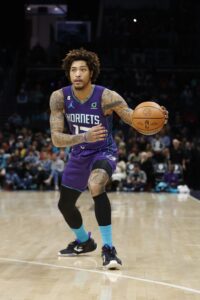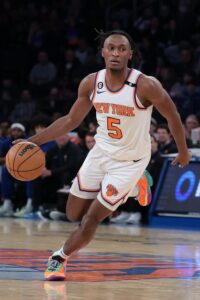Teams are inching toward the start of training camp at the end of September and, as we noted, there are several teams with full offseason rosters of 21 players. However, on the other side of things, there are three teams with only 13 players on standard contracts.
CBA rules state that teams cannot have fewer than 14 players on a standard roster for more than 28 total days during the course of the entire season, or for two consecutive weeks. That means teams can dip to 13 or fewer players on standard deals temporarily, but are mandated to keep at least 14 players for the majority of the season.
[RELATED: Hoops Rumors Glossary: NBA Roster Limits]
Based on those guidelines, these teams are likely to make moves before the start of the season to get up to at least 14 players on standard deals.
It is important to note that there are other teams could dip below 14 players on the standard roster before the season begins. For example, the Celtics currently have 14 players signed to standard deals but three, including the recently signed Svi Mykhailiuk, are owed little to no guaranteed money. The Heat and Rockets are among the other teams who could have standard roster openings in the future, as both clubs have several players signed to Exhibit 10 deals ahead of training camp.
Let’s take a look at the three teams who have two or more openings on their 15-man roster and who could logically fill those spots.
Cavaliers
The Cavaliers have 16 total players signed to deals — 13 on standard deals and three on two-way contracts. Sam Merrill, one of their 13 players, is signed to a deal that is fully non-guaranteed. The Cavs are a bit difficult to predict, though they had rumored interest in signing P.J. Washington before he re-signed with Charlotte.
The Cavs could either convert a player to a standard contract, such as Isaiah Mobley, or could be looking for veteran scoring off the bench. If the latter is the case, Kelly Oubre could be a natural fit in a bench role on a one-year prove-it deal. Rudy Gay is another name who may hold appeal as a veteran presence off the bench. Javonte Green or T.J. Warren also make some sense as bench options.
Trail Blazers
The Trail Blazers are almost certainly waiting on clarity from Damian Lillard‘s trade request before proceeding with their roster. The Blazers have 13 players signed to standard deals, though Moses Brown is guaranteed for only $250K, so it’s feasible they end up having to fill out more of their roster. It makes sense for Portland to maintain this flexibility, as they’d almost certainly have to take in more players than they send out in any deal involving Lillard.
If a Lillard trade doesn’t happen before the season, the Blazers could look to sign younger pieces who fit their timeline. Portland could also consider bringing back some players who had flashes over the past two seasons, such as Justise Winslow or Skylar Mays, the latter of whom impressed on a 10-day deal with the Blazers last year.
Warriors
The Warriors have two open standard roster spots and a pair of two-way openings. It’s no secret that Golden State is seeking size, and they were reportedly in on bringing JaVale McGee back before he signed with Sacramento.
Golden State invited a handful of players to work out last month, including now-Brooklyn Net Harry Giles. Juan Toscano-Anderson was a participant at that workout, and could provide depth in the power rotation. Bismack Biyombo is one option at center. The Warriors could opt to bring back JaMychal Green. Outside of that, converting Lester Quinones from his two-way deal is anotehr potential path for Golden State.
 The 15th pick of the 2015 draft, Oubre has earned at least $12MM in each of the past four seasons. He averaged a career-high 20.3 points in 48 appearances with the Hornets last season while snatching 5.2 rebounds and 1.4 steals per game.
The 15th pick of the 2015 draft, Oubre has earned at least $12MM in each of the past four seasons. He averaged a career-high 20.3 points in 48 appearances with the Hornets last season while snatching 5.2 rebounds and 1.4 steals per game. Let’s use Knicks guard
Let’s use Knicks guard